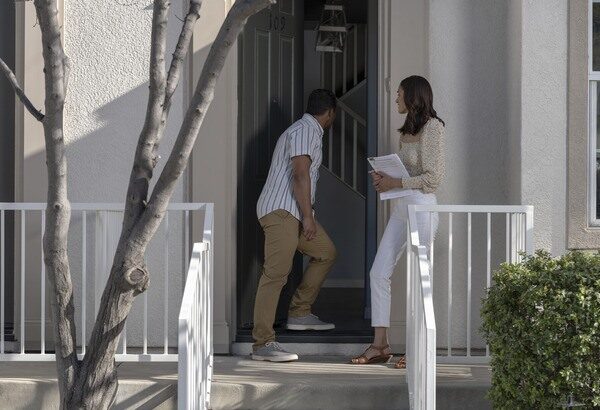
It may be just a rental, but it’s got all your stuff in it. There are many boxes to check when you’re on the hunt for a new rental apartment, and security slips many renters’ minds at viewings. You should always pay very close attention, not just to the security of the building itself, but also to the security of your apartment. That begins at your door, the last line of defense between you and your belongings and the outside world. Every door will have some kind of lock on it already, but locks can be picked or forced and broken. From additions as simple as deadbolts to more advanced options like door security apps, renters should be aware of additional options to fortify their apartment door security. Here are some simple tips for boosting your apartment security with a more fortified door.
1. Make sure your apartment door has a deadbolt lock
One of the simplest forms of door reinforcement is a deadbolt lock. Every apartment door should have one. If yours is missing, then ask your landlord if it’s possible to install one as soon as possible. Deadbolts are made from solid metal, with no exposed screws. If your lock fails, the deadbolt will hold against most attempts to force the door. You can also opt for an extra reinforced deadbolt strike plate for additional security. The strike plate is the metal plate that frames the hole your deadbolt slides into. The more secure the strike plate, the harder it will be for an intruder to break through the deadbolt. For this reason, longer anchor screws are preferred when installing strike plates so that they are more firmly secured to the door.1
2. Get a door jammer
A door jammer is a portable form of door security that attaches to doors at the base and prevents them from swinging inward. If your door swings outward, a door jammer will not be effective. However, for inward-swinging doors, a door jammer is a great way to prevent break-ins. Since they don’t require installation, door jammers are an excellent example of how to barricade a door if you suddenly become aware of a break-in attempt. You can also bring your door jammer on the go to reinforce doors in hotels or BnB’s.
3. Use a door brace
A door brace is another form of door reinforcement that can be attached to the bottom of any inward-swinging door. Easy to install and remove, a door brace is an excellent way to secure your door from the inside against attempts to kick it down or otherwise force it open.
4. Consider a door security bar
Ever seen someone prop a chair under the door handle to secure it in a movie? That’s similar to how most door security bars work, albeit much less effectively. Unlike that chair, a door security bar has a base with extra grip to ensure it doesn’t slide back if the door takes impact from the outside. It’s also quite a bit stronger. The best door security bars can withstand impacts with a force of over 500 lbs.2
5. Secure sliding doors
Some apartments have sliding doors to backyard or balcony areas. It’s easy to forget about doors that aren’t the primary means of entering your home, but these doors are equally as important to secure. You can provide additional security to any sliding door by wedging a pipe or sturdy piece of wood into the bottom rack. This will keep the door from opening even if it’s unlocked. Even if you do use a makeshift brace, it’s still best to keep sliding doors locked. You can find latch locking mechanisms that provide extra reinforcement at your local hardware store.
Make sure you have renters insurance
While every renter should know how to secure a door, it’s important to be prepared if your door defenses ever do fail. Make sure you have renters insurance to cover the costs of any damaged or stolen property.
1https://www.consumerreports.org/door-locks/spending-10-dollars-on-a-door-strike-plate-will-make-your-lock-safer/, Accessed July 2021
2https://fightingchancesolutions.com/pages/21-best-door-security-bars, Accessed July 2021
Disclaimer:
The information included is designed for informational purposes only. It is not legal, tax, financial or any other sort of advice, nor is it a substitute for such advice. The information may not apply to your specific situation. We have tried to make sure the information is accurate, but it could be outdated or even inaccurate in parts. It is the reader’s responsibility to comply with any applicable local, state, or federal regulations. Nationwide Mutual Insurance Company, its affiliates and their employees make no warranties about the information nor guarantee of results, and they assume no liability in connection with the information provided. Nationwide, Nationwide is on your side, and the Nationwide N and Eagle are services marks of Nationwide Mutual Insurance Company. © 2021 Nationwide.



